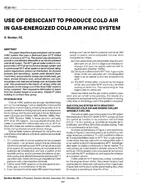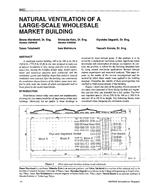Describes a ground refrigeration system utilising a passive radiator that was incorporated into the design of a vehicle-maintenance shop during the first stages of construction on the North Slope of Alaska. The initial foundation design was based on a soils report that predicted thaw-stable permafrost soils. (A permafrost soil is one that remains below 32 deg F [0 deg C] over several cycles of summer and winter. Upon thawing, the thaw consolidation of this soil ranges somewhere between two extremes – from very little for low-moisture gravels [thaw stable] to substantial for fine-grained, high-moisture soils [thaw unstable]). When thaw-unstable soils were encountered during foundation excavation, the design had to be modified in a manner that not only would minimally affect the construction contract but also would result in a structually stable building foundation. The design utilised available materials to construct an innovative system that is easy to maintain and efficient to operate and that has proved to be effective since its construction in 1980.
KEYWORDS: passive, radiators, foundations, soil, permafrost, refrigeration, buildings, USA, designing, history, arctic regions, construction, garages, workshops.
Citation: Symposium, ASHRAE Transactions, vol.97, Pt. 1, New York 1991
Product Details
- Published:
- 1991
- Number of Pages:
- 5
- File Size:
- 1 file , 610 KB
- Product Code(s):
- D-18580


